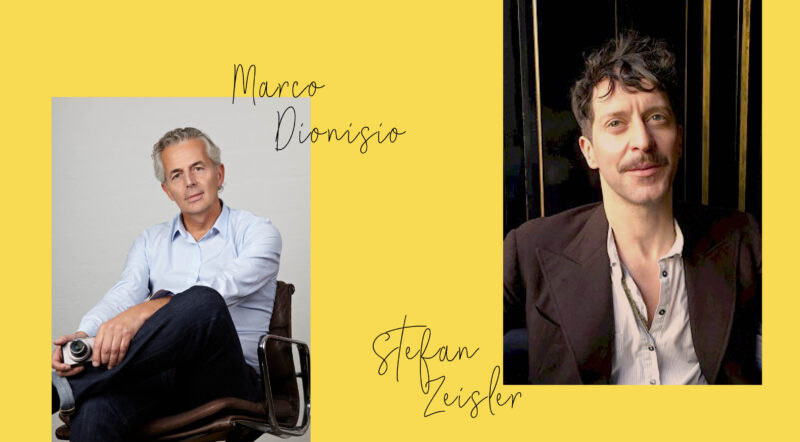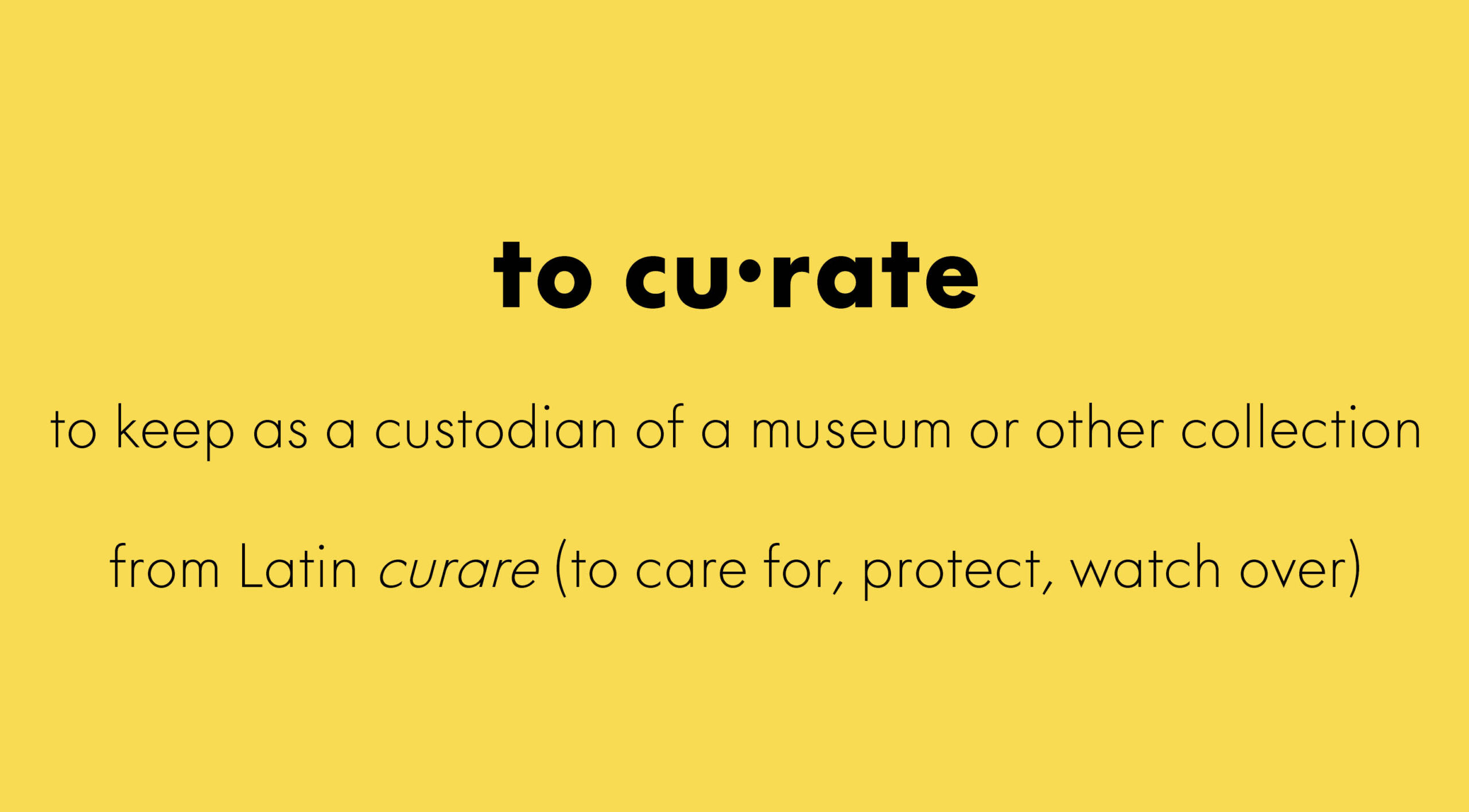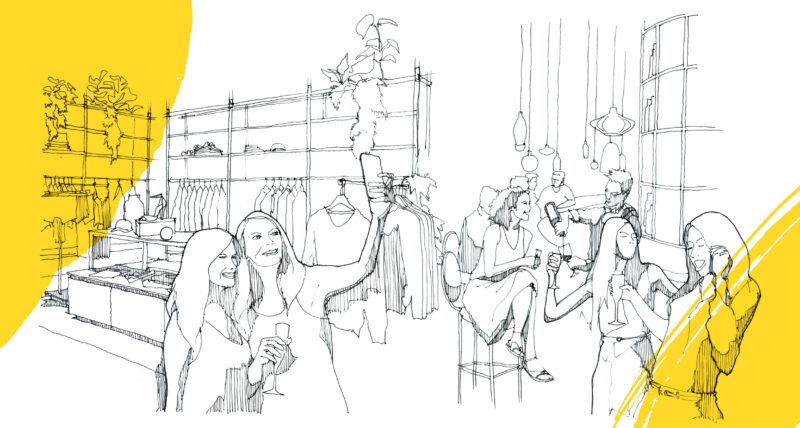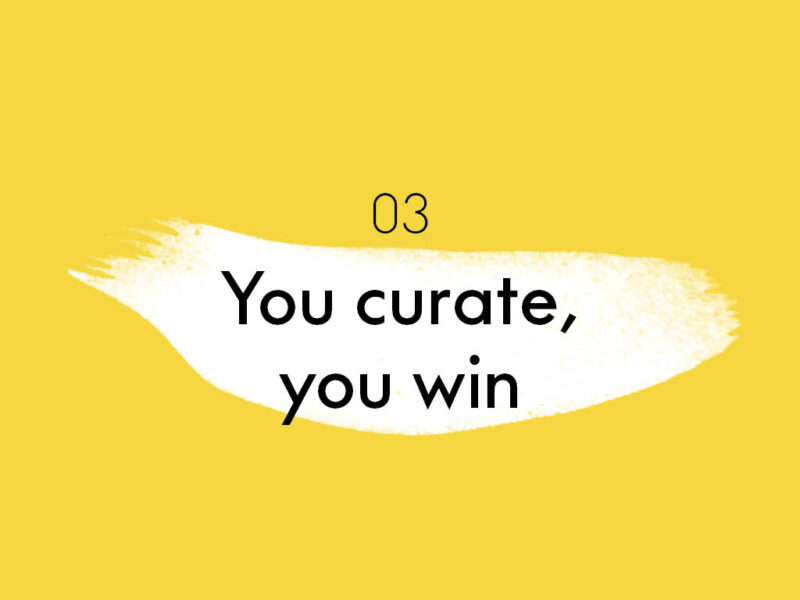You curate, you win!
Retail customers are on the lookout for experiences, relevance, and meaningful connections. That works best in a well-curated product world, one that is close to customers’ own experience of life.
But how does good curation actually work? And what extras need adding to the product range? To learn more about this principle, we headed to the source and found inspiration – at the museum.

Marco Dionisio (Interior Designer and Proprietor of dioma ag)
He just loves stylish selling. That’s why major department stores such as KaDeWe in Berlin, Globus and PKZ in Zurich and Kastner & Öhler in Graz and Innsbruck turn to him for advice. Marco Dionisio and ‘dioma ag’, the company he founded in Bern in 2001, develop highly visual presentations and strategies for retailers. His office particularly focuses on trend research, visual merchandising and interior design. Alongside this, Marco also manages his own store – ‘Bonjour Verbier’ – a blend of concept store and interior design studio for chalet furnishings in the heart of the Swiss mountains.
Stefan Zeisler (Creative Director of the KHM Museumsverband in Vienna/Innsbruck)
With three sites, the Kunsthistorisches Museum Vienna has become one of the city’s most popular attractions, with constantly rising visitor totals (2018: 1.75 million). The photographer Stefan Zeisler has been linked to the institution for 20 years and, as Creative Director, is now responsible for visual presentations at all associated locations. His work also involves devising new creative ideas for the Kaiserliche Schatzkammer, the imperial treasure chamber and art collection with famous pictures by Caravaggio, Dürer, Rubens and Vermeer.
Stefan Zeisler, Creative Director of the KHM-Museumsverband in Vienna, gave us some insights as to how creative curation works in his museum, and how that also benefits visitor retention and sales. Marco Dionisio, who works as an interior designer and consultant for department stores and retailers in the Alpine countries and beyond while also managing a concept store himself, reflects on the implications these insights have for retailers.

1. Tell us, Mr Zeisler. What does a curator’s job actually entail?
SZ Today’s museum visitors have different expectations from those 20 years ago, especially in terms of what awaits them. They pay 16 euros and expect to experience a whole world. It’s our job as curator, designer or creative director to grant them access to this world: from advertising to the visit itself through to the museum store. After all, visitors naturally want to take their experience home with them.
How do you achieve that at the KHM?
SZ VMore than anything, we have to tell people stories which they can identify with, narratives that fit in with their own lives. In an upcoming exhibition, we will be using our exhibits to tell the story of fashion from the 14th to the 19th centuries. If I were to present the images merely as historic paintings, then they would hardly be relevant to most people. We have to build connections, distil topics and, for this, also refer to current political issues within society, such as the climate debate.
To currate is to narrate. Stefan Zeisler
2. Do you recognize any parallels to retail, Mr Dionisio?
MD A department store should always aspire to address its own topics. I mean keynote worlds that are present throughout the store. We need to see more of that again. And these days, this approach can be wonderfully supported with temporary popup spaces. Having said that, it needs to be authentic and to surprise customers, so it can’t just be Halloween, Black Friday, or other globalised stories that have already been copied and decorated endless times.
Can art play a role here?
MD For some major brands, cooperating with designers and artists has really paid off when launching hip lifestyle articles. And what applies to the product holds just as true for stores. We have often dedicated display windows to renowned or local artists. This kind of approach has to fit the location and clientele, and then it is really appreciated.
SZ In Japan, the KHM has organised some high-class art exhibitions with department stores. For us Central Europeans, that might sound slightly obscure and risky, but it is par for the course there. They charge normal entry and it pulls in the crowds.
MD I still remember the opening of the Whitney Museum in New York. I walked in and was taken aback: Loud music was blaring out, young people sat on staircases, teenagers stood in front of pictures and took selfies. I felt I had just walked in on the best party in town. I sometimes wish retail could capture this aura: an exclusive but highly democratic experience for a wide range of people.
The best party in town… I sometimes wish retail could capture this aura. Marco Dionisio
SZ That’s exactly what brings the space to life. At the museum, we target very different groups of people. We offer a packed programme for people with special needs, for example. You need someone to guide the visitor individually through the curated experience.

3. Where exactly does the curated experience begin?
SZ You have to be brutal in breaking that down by visitor perspective. We have our “fast food” public. They zoom through the collection in ninety minutes clutching their tablets and snap everything in their sights. That’s okay. And then there are those who worked all week and now need to decide where to spend their Saturday afternoon with their two children: swimming pool, Prater or museum? It’s not just other museums we have to compete with.
MD That’s what I recommend to our clients as well. They should look at what situational needs the people who come through their doors have and, like other institutions, try to address these. What do you do to make a visit appealing to families?
SZ For us, the key is often the children’s programme. The parents are free, have time to relax, maybe find a guided tour that matches their interests. After that, they want a coffee, of course, and then to look for a present for the next day’s birthday party. They can find that at the museum shop and then they can pick up the kids. We help people to satisfy a wide variety of needs: information, food, relaxation, a whole package of beautiful impressions and experiences, as well as offering a few things that will remind them of their experience. Now that’s a competitive afternoon.
We curate a whole day. Stefan Zeisler
MD Retailers can certainly be inspired by that. It’s just important that everyone should focus on their own strengths without copying. What we need is fresh creativity: ideas, ideas and more ideas. Many things are being tried out. A fantastic café or restaurant is nothing new at a department store. Here too, though, our mission is to reinterpret this and connect it with the product world to form an all-round experience.
SZ It’s also about making sure people feel at their ease. Some might enjoy the couch in front of the Rubens slightly more than the actual painting. And it’s fine for them to feel comfortable. That’s where, for example, a couple can take time to contemplate a picture together.
MD A few years ago, we redesigned the shoe department at a major department store and deliberately added extremely exclusive sofas. The customers were thrilled, as we gave them their all-time smartest sitting experience. That in itself does not generate sales, but it certainly makes customers willing to stay around longer and enhances the atmosphere.

4. So where do the sales come from?
MD If I can buy stories and experiences and not just interchangeable products, then my wallet is yours. That is the added value of stationary retail: Products tell me about the place I bought them, about the day I bought them, about the people I met and who advised me. It’s our job to make all these aspects worth telling.
SZ If you put more time and more personal contact into something, then it’s also worth more – that’s something we also see in our museum shop. One of our most popular products is “Royal Bee”, our single-origin honey from beehives on the roof of the KHM. We produce around 300 kilos a year and, despite its impressive price, it sells like mad. Why? Because it is embedded in the overall experience. The building and the product tell each other’s story.
Product and place tell each other’s story. Stefan Zeisler
MD In Verbier, we sell a scented candle with the aroma of pine forests and champagne, which really only makes sense at our store. And precisely for that reason it’s an absolute bestseller. There are different types of stores, but exclusive products are always good, especially if they are closely linked to the place I buy them. And if you curate not only the products, but also their presentation in the store, then you save customers a great deal of effort. You make it possible for them to discover as many special things as possible, and that in a small space. And customers know how to reward that.